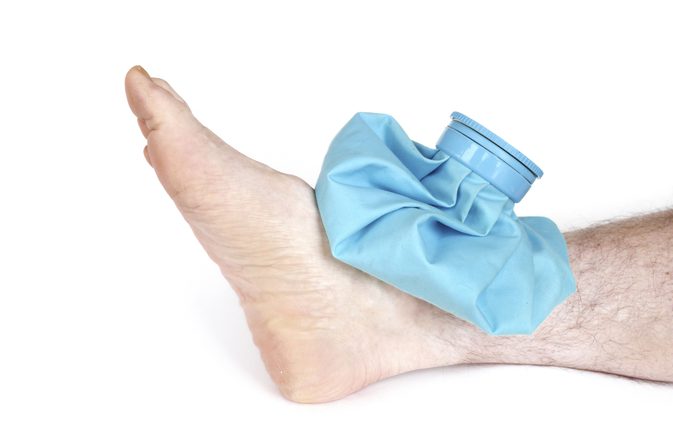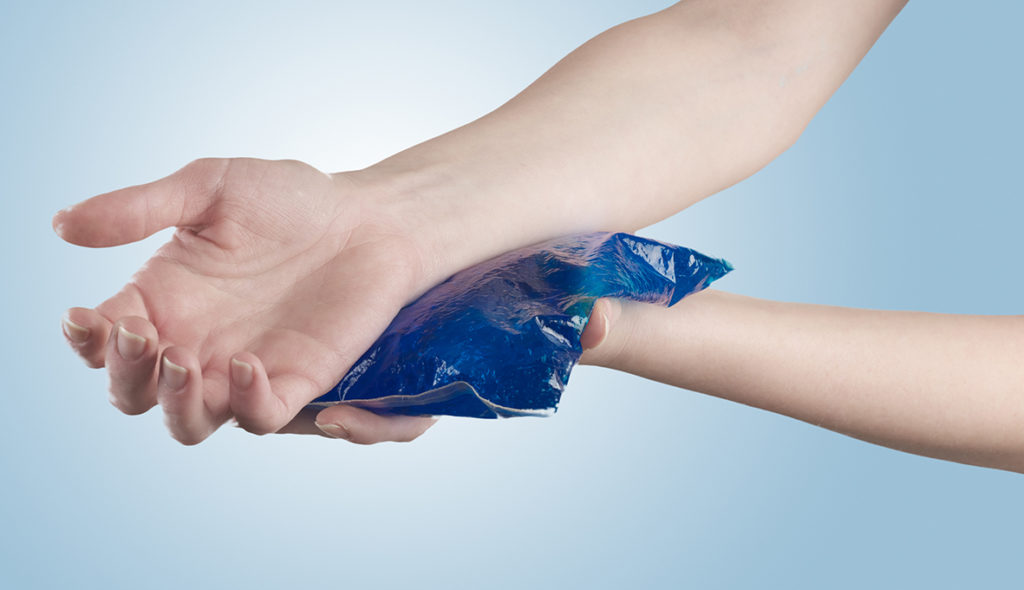What are the benefits of using ice therapy to treat your injuries?
Ouch! You’ve just sprained your ankle – what do you do?
Many people commonly ask if they should apply a heat pack or an ice pack to their injury. What is the answer? Well, it comes down to the type of injury you have experienced and how long you’ve had it for.
Injuries can prematurely halt your training and take the enjoyment out of life. Nobody wants that. Thus, it is important for you to understand your injury and the right treatment to hasten your recovery.
This article will answer your questions on when to use ice therapy and what you should do with that painful ankle sprain – read on!
When should I use ice?
Most healthcare professionals recommend using heat for chronic injuries and ice for acute injuries. However, most people cannot differentiate between acute and chronic injuries and so just follow their gut.
Before we decide on whether to use ice or heat for your sprained ankle, we need to know what type of injury it is.
So, what is the difference between a chronic injury and an acute injury?

A chronic injury typically refers to an injury that has been present for longer than 3 months. It may be an injury, disease or pain that develops slowly and persists for a long period of time. Chronic injuries may be overlooked initially as they take a longer time to manifest. By the time you realize you are injured/have a disease, you may find yourself in a health crisis. At this point you may need serious medical care or prolonged therapy.
An acute injury typically refers to an injury that you instantly sustained and that will heal on its own within a shorter time period. Acute injuries occur suddenly as a result of an activity, strain or slip.
Now that we know the difference between acute and chronic injuries, what about your sprained ankle?
So what type of injury in a sprained ankle? A sprained ankle is a classic example of an acute injury. You sprain your ankle suddenly as a result of a slip, strain or accident. The pain will tend to subside and you will get back on your feet in no time.
So what about ice?
Using effective heat and ice treatment methods at the appropriate time can enhance your body’s healing response while speeding up recovery time.
An Explanation of the physiology of ice therapy
Ice helps to reduce the flow of blood to the muscles. Thus, there is a reduced amount of blood in the muscles as the constriction process pushes it out. This is effective to reduce discomfort, swelling and bruising, such as that experienced when you sprain your ankle.
As the muscles begin to warm up, new blood rushes in and helps clean the leftover from the injury and hasten the healing process. It is advised that ice is applied for 10 minutes every hour. The faster the cycle is allowed to transition, the quicker the recovery process for an acute injury (severe and short injuries). Endeavor to place a towel in-between the body and ice.
Remember that allowing the ice on the skin for more than 10 minutes can harm the body.
For chronic injuries (long-term injuries), moist heat is the preferred treatment method. Moist heat applied to an injury will relax blood vessels, which will allow the blood to flow more easily. Usually, there is a lack of blood (ischemia) associated with chronic injuries.
Ischemia will slow down the healing process thus, moist heat becomes important. Apply moist heat to the affected area for up to 20 minutes every hour and endeavor to place a towel in-between the body and the moist heat.
What about ice therapy for spinal injuries?
The answer is more complicated. If you suffer from lower back pain and have lived with this pain for years, this is classed as chronic pain. Heat may be beneficial in relaxing tight muscles.
However, if your spinal injury involves disc herniation or constant/renewed inflammation around a spinal joint, ice may be more appropriate. In the case of a spinal injury it is recommended to talk with your local chiropractor or G.P.
Hasten your recovery; discover how ice can make your injury heal faster
Get the ice on quickly
Icing is particularly effective if applied almost after the injury. The impact of icing on an injury reduces after two days. To reduce swelling and inflammation, try to get the ice as quickly as possible following an injury.
Perform an “ice massage”
Apply ice directly to the injury. Do not allow the ice remain on a specific spot, move it continuously. Most athletes will directly apply and massage a block of ice on an affected area to ease discomfort, move the ice around the affected area to avoid prolonged contact on a particular spot.
Don’t forget to elevate
To reduce swelling, keep the affected area above the heart while icing, this will help prevent swelling. By avoiding inflammation, your body can heal faster.
Watch the Clock
Do not ice for more than 15-20 minutes at a go. Anymore longer and you risk damaging the skin tissues. Ensure you repeat the process to prevent swelling.
Allow time between treatments
Ensure to allow the body warm up for about 45 minutes before repeating the ice massage again. Repeating this process can help reduce the chances of inflammation.
Repeat as Needed
Ice as much as required, as long as the area is warm to touch and has a normal sensation. Remember, inflammation can remain for up to 48 hours after an injury and reducing the level of inflammation and swelling can help you recover quicker.
Conclusion
So that is it. Use ice for immediate injuries such as a sprained ankle, where inflammation, bruising and pain occur straight away. Use heat to relax tight muscles when you have a chronic condition that has been present for longer than 3 months.
The difference between a chronic injury and an acute injury comes down to how long you have experienced it.
Ice reduces inflammation and soothes pain. Heat increases muscle movement and promotes blood flow.
Be aware when using ice, however, that prolonged contact with your skin may lead to additional problems. The general rule of thumb is that ice should be applied for ten minutes every hour.
If your pain persists or if you are still injured, it is advisable to contact your local doctor or healthcare professional for a checkup.
Related Post: Best Waist Cincher 2019 Reviews
[ABTM id=312]

